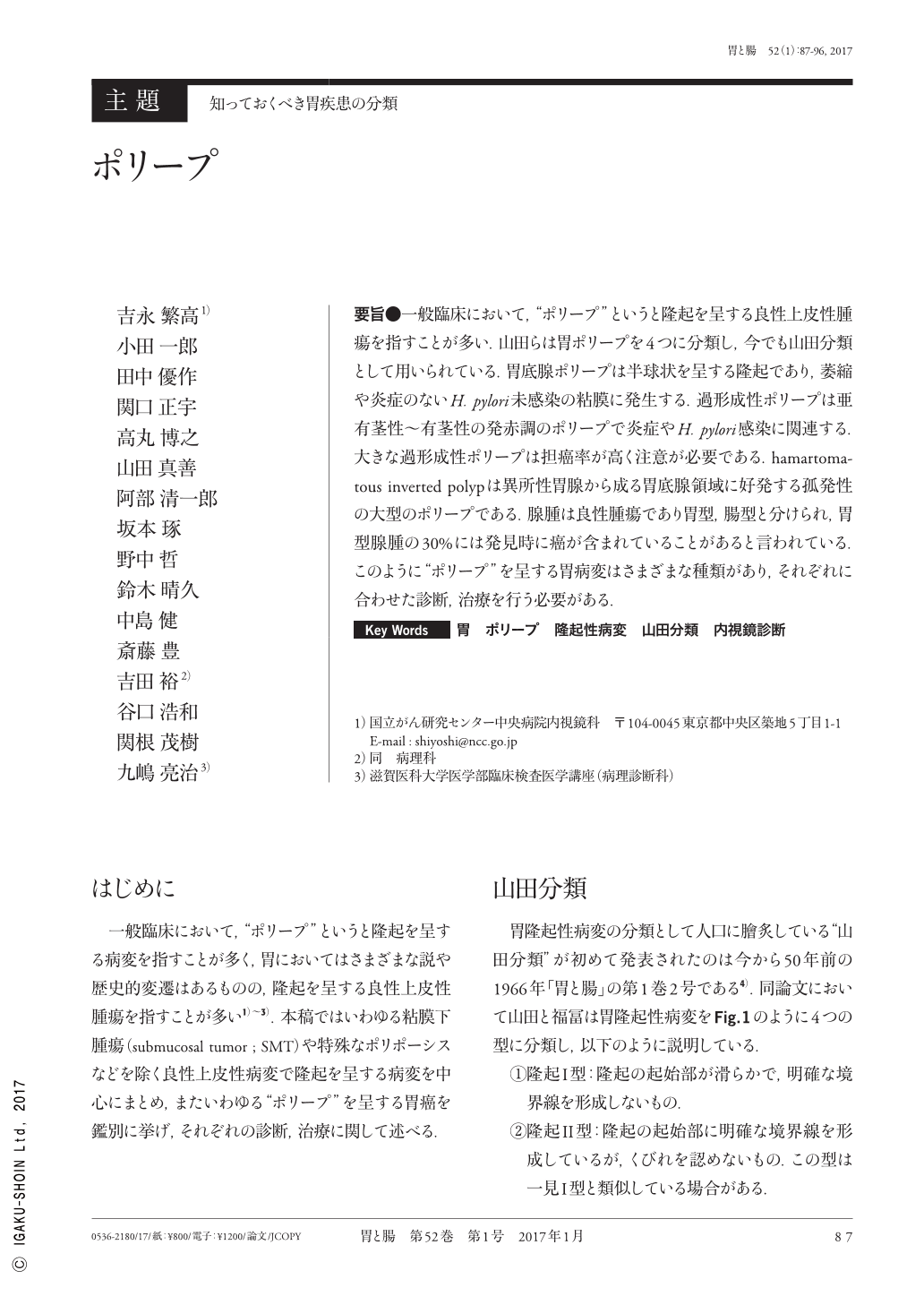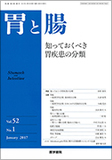Japanese
English
- 有料閲覧
- Abstract 文献概要
- 1ページ目 Look Inside
- 参考文献 Reference
- サイト内被引用 Cited by
要旨●一般臨床において,“ポリープ”というと隆起を呈する良性上皮性腫瘍を指すことが多い.山田らは胃ポリープを4つに分類し,今でも山田分類として用いられている.胃底腺ポリープは半球状を呈する隆起であり,萎縮や炎症のないH. pylori未感染の粘膜に発生する.過形成性ポリープは亜有茎性〜有茎性の発赤調のポリープで炎症やH. pylori感染に関連する.大きな過形成性ポリープは担癌率が高く注意が必要である.hamartomatous inverted polypは異所性胃腺から成る胃底腺領域に好発する孤発性の大型のポリープである.腺腫は良性腫瘍であり胃型,腸型と分けられ,胃型腺腫の30%には発見時に癌が含まれていることがあると言われている.このように“ポリープ”を呈する胃病変はさまざまな種類があり,それぞれに合わせた診断,治療を行う必要がある.
Most so-called“gastric polyps”are protruding benign epithelial lesions. Dr. Yamada divided gastric polyps into four types and reported this as“Yamada's criteria”for gastric polyps. This category includes fundic gland polyps, hyperplastic polyps, hamartomatous inverted polyp, adenoma, and so on. Fundic gland polyp is a hemispherical, normal colored, non-neoplastic polyp arising from nonatrophic mucosa. Hyperplastic polyp is usually a semi-pedunculated or pedunculated reddish polyp caused by inflammation, especially from Helicobacter pylori infection. Large hyperplastic polyps have the potential to be malignant ; therefore, we should observe them carefully. Hamartomatous inverted polyp is a solitary, large, hamartomatous lesion originating from heterotopic gastric mucosa. Adenoma is a benign epithelial neoplasm, which is divided into two types:intestinal type and gastric type. Approximately 30% of gastric-type adenomas with the ingredient of cancer when detected.
Gastric polyps also include some types of lesions ; therefore, we should be aware of the diversity of gastric polyps.

Copyright © 2017, Igaku-Shoin Ltd. All rights reserved.


